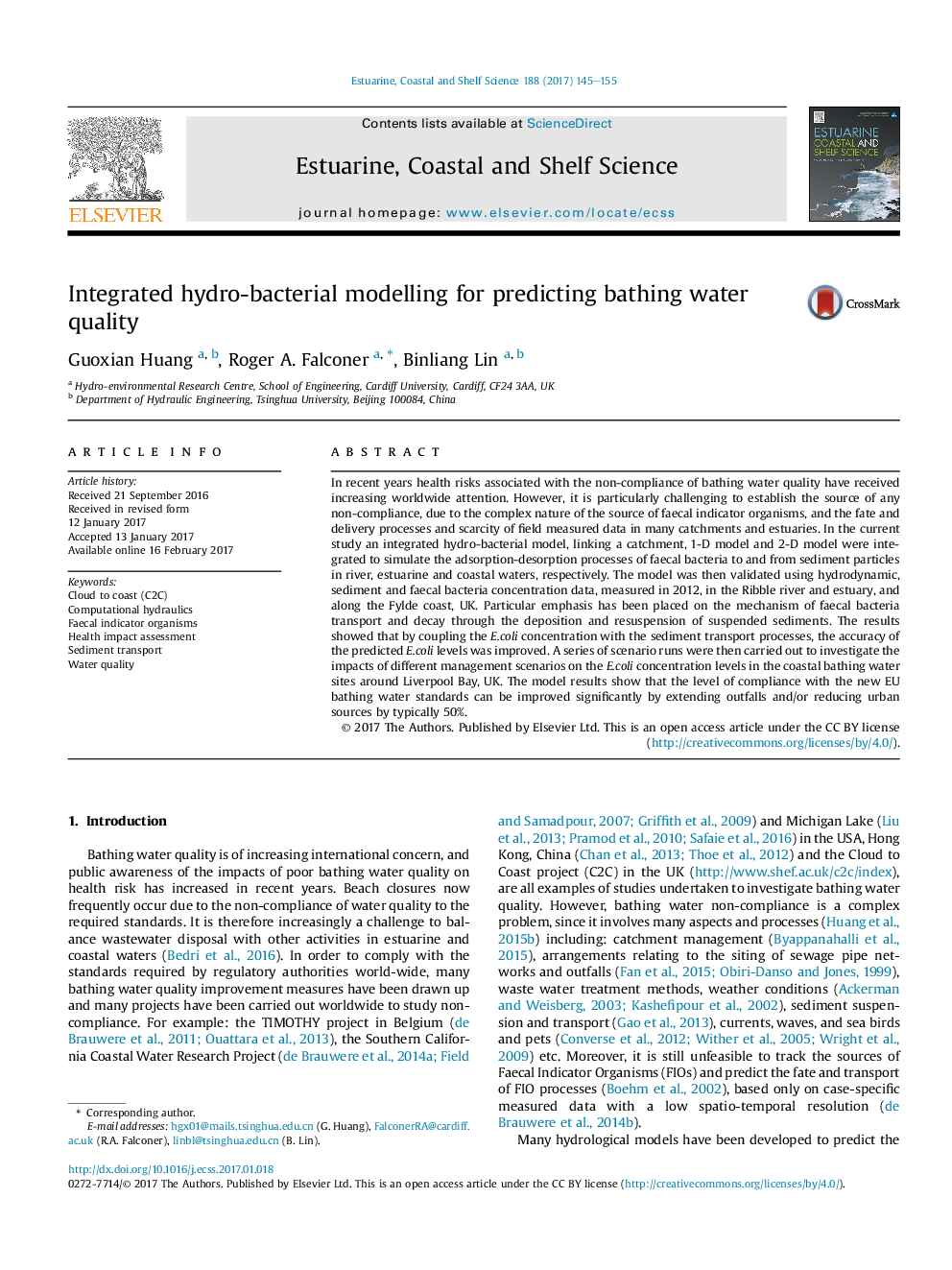| Article ID | Journal | Published Year | Pages | File Type |
|---|---|---|---|---|
| 5765360 | Estuarine, Coastal and Shelf Science | 2017 | 11 Pages |
In recent years health risks associated with the non-compliance of bathing water quality have received increasing worldwide attention. However, it is particularly challenging to establish the source of any non-compliance, due to the complex nature of the source of faecal indicator organisms, and the fate and delivery processes and scarcity of field measured data in many catchments and estuaries. In the current study an integrated hydro-bacterial model, linking a catchment, 1-D model and 2-D model were integrated to simulate the adsorption-desorption processes of faecal bacteria to and from sediment particles in river, estuarine and coastal waters, respectively. The model was then validated using hydrodynamic, sediment and faecal bacteria concentration data, measured in 2012, in the Ribble river and estuary, and along the Fylde coast, UK. Particular emphasis has been placed on the mechanism of faecal bacteria transport and decay through the deposition and resuspension of suspended sediments. The results showed that by coupling the E.coli concentration with the sediment transport processes, the accuracy of the predicted E.coli levels was improved. A series of scenario runs were then carried out to investigate the impacts of different management scenarios on the E.coli concentration levels in the coastal bathing water sites around Liverpool Bay, UK. The model results show that the level of compliance with the new EU bathing water standards can be improved significantly by extending outfalls and/or reducing urban sources by typically 50%.
